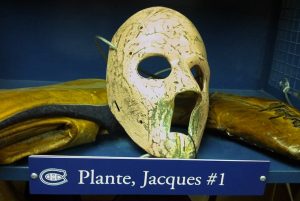The Walkie-Talkie, IMAX, Pablum, the atomic clock, and the G-suit all have one thing in common. They were invented by right here in Canada. From its inception, Canada has been interested in exploration, discovery, and education. The original explorers including John Cabot knew that scientific navigation and geography were essential for their success and fundamentally, their survival. Jesuit missionaries were arguably the first organized group interested in scientific education and nature; in the mid-1700s they sent their findings back to Europe and taught science and navigation in Québec. The government (be it the imperial or commonwealth) has been involved in research from the very beginning promoting and financing research in many areas of science and innovation. In a country as large as Canada where natural resources are abundant and science is everywhere, the possibilities for research are almost endless. However, the funding for said research is not always great; we are a big country with a relatively small population and available monies. Much of the big science being done here is through the National Research Commission (NRC). Science funding and policy making are both federal and provincial and is closely tied to the economy and current government.
The developments came in areas of great importance to the country as a whole. Agriculture, communication, transportation, climate, and sport figure prominently and who can ever forget the importance of our national foods, poutine and Nanaimo bars? (How aren’t we a country of diabetic heart attacks waiting to happen?)
2016 was the centennial of the NRC and their website has posted many of their accomplishments there. We will discuss a number of these that I personally find interesting in the following paragraphs. Hold onto your hats; we have much to talk about.
Food and Agriculture: Let us start with the good old McIntosh apple, my personal favourite apple. The Mac is the national apple of Canada discovered as a sapling by John McIntosh in 1811. He and his wife bred this tree and began grafting the tree and selling the fruit in 1835 and it soon became the most popular choice. Canola, an oil low in saturated fat and source of biodiesel, was developed from rapeseed oil at the NRC and is actually named after ‘can’, for Canada and ‘ola’ for oil. Pablum was developed by pediatricians Frederick Tisdall, Theodore Drake, and Alan Brown in collaboration with nutritionist Ruth Herbert (along with Mead Johnson chemist Harry H. Engel ) providing an assortment of minerals and vitamins. It was a huge breakthrough in nutritional science and helped prevent rickets in children.
Communication: The Walkie-Talkie, formerly known as the handheld transceiver (walkie-talkie is so much better) is a handheld two-way radio developed during World War II and has been credited to Donald L. Hings and Alfred J. Gross. Initially built for bush pilots flying between remote communities it was quickly picked up for military use. Originally used by the infantry followed by field artillery and tank units. Canada installed the ‘Night Watchman”, the first operating radar array in North America as a coastal defense system near Halifax, Nova Scotia to protect the East Coast during World War II.
Transportation: In a country as big as Canada is it any wonder that we have made some in-roads (see what I did there?) in the area of transportation. Alexander Graham Bell (yes, everyone knows that AGB was Scottish by birth and worked in the US too but we love to claim this guy as our own) and Casey Baldwin refined the hydrofoil after viewing work previously done by Italian Enrico Forlanini. A full-size replica is on view in Baddeck, Nova Scotia at the Alexander Graham Bell National Historic Site museum. NRC engineers removed the ‘clickety-clack’ sound from modern railroads by welding tracks as opposed to the 12-metre bolted sections previously used. This also helped lower the maintenance needed to maintain tracks. Who can forget that Joseph-Armand Bombardier was the inventor of the snowmobile? What is more indicative of the Great White North’s winters? The first B7 machine could hold 7 passengers and was well received because Quebec at the time (1936-37) did not plow their roads which made getting around difficult unless you had yourself a saddle-broke polar bear.
Climate: Speaking of weather, Canadians invented the steam-powered foghorn (Robert Foulis-1854), the rotary snowplow (JW Elliot-1869), and the snow blower (Arthur Sicard-1927). One would think there would be an endless supply of inventions in regards to the weather and winter in particular. We do have a lot of weather in this great nation and I believe (try to prove me wrong) that a Canadian invented talking about the weather. It is a Canadian pastime.
Sport: Basketball, ice hockey, lacrosse, and five-pin bowling; all developed and/or refined here. The goalie mask and the hard jock cup: originally designed here. Canadians are protecting stem and stern. And please do not forget table hockey and Trivial Pursuit? Both of these prompted huge battles in my childhood home.
So there you have it; some of the more innovative inventions from this nation. There have also been huge advancements here in medicine and ‘pure’ science which I will cover in another blog in the future. There is a wealth of information to cover. If you are a Canadian inventor, you have some big shoes to fill!
–Janice Willson
FYI: August is inventors’ month. Take a look at these websites for more about this:
https://www.nhaschools.com/en/Blog/August-is-National-Inventors-month
https://www.daysoftheyear.com/days/inventors-month/
Photo source: B7 snow machine, Bombardier; Jacques Plante hockey mask, Michael Pick

